France, officially the French Republic, is a sovereign state comprising territory in western Europe and several overseas regions and territories. The European, or metropolitan, area of France extends from the Mediterranean Sea to the English Channel and the North Sea, and from the Rhine to the Atlantic Ocean. It is a unitary semi-presidential republic with the capital in Paris, the country's largest city and main cultural and commercial centre.
30 Top Rated Tourist Attractions in France
The Gorge du Verdon, located in southeastern France, is considered one of Europe’s most beautiful river canyons. It’s at its deepest (almost 2,300 feet or 700 meters deep) between Castellane and Moustiers-Sainte-Marie, an area that offers the best views as the green emerald Verdon River winds its way through the canyon. The Gorge du Verdon is a 25 kilometer (15 miles) long canyon and rises a spectacular 700 meters (2,300 feet) from the Verdon river below. The river, which is named after its startling green emerald color, is one of the Gorge du Verdon’s most beautiful features. Water sport opportunities here include rafting, kayaking, sailing and water skiing. Thi is would be amazing tourist attractions that you can enjoy.
2. Chamonix Mont Blanc

The awesome spectacle of Mont Blanc in the French Alps is an unforgettable sight. The highest mountain peak in Europe, Mont Blanc forms part of the French border with Italy. Mont Blanc, "White Mountain," soars to 4,810 meters, so high that it's always blanketed in snow. Beneath its heavenly peak is the traditional alpine village of Chamonix, nestled in a high-mountain valley. This quaint little town is filled with historic churches, cozy chalet restaurants, and charming auberges. Chamonix is a great base for skiing, hiking, rock climbing, and outdoor adventures, or just relaxing. Soak up the serene scenery and listen to the sound of rushing streams. Savor hearty meals of the rustic Savoy cuisine-based on potatoes, cheese, and charcuterie with specialties like fondue and raclette.


Val d’Isère is a popular ski resort in southeastern France close to the border with Italy. It hosted men’s ski racing, including downhill and slalom, in the 1992 Winter Olympics and regularly hosts World Cup races. The charming village finds its 1,800 residents outnumbered 15 to one by guests in winter.
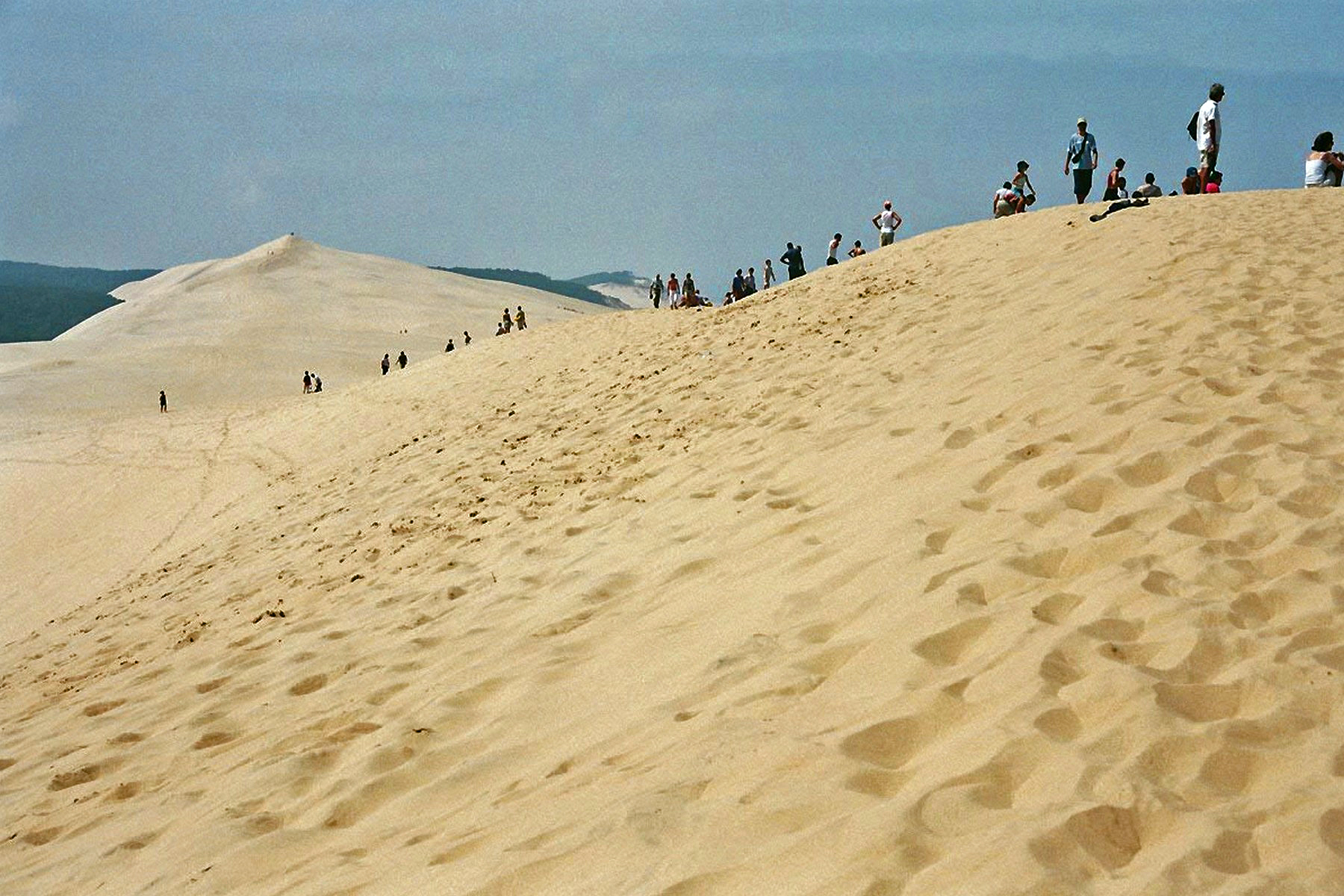
Located in the Arcachon Bay area, the Dune of Pyla is the tallest sand dune in Europe. Its growing eastwards at about 4.5 meter a year – it has swallowed trees, a road junction and even a hotel. At the summit of the dune the view is spectacular with the Atlantic coast and the inlet of the bay on one side and a large pine forest on another.
3. Etretat Cliffs

Étretat Cliffs is France’s answer to England’s White Cliffs of Dover. It has tall white cliffs with arches that jut out into the English Channel in Upper Normandy. In years past, this farming village was a draw for artists, including painter Claude Monet and author Guy de Maupassant.
4. Val d'Isere

5. Dune of Pyla
6. Mont Saint Michel

Mont Saint Michel is a small tidal island located just off the coast of Normandy. A spectacular and well-preserved Norman Benedictine Abbey of St Michel stands at the peak of the rocky island, surrounded by the winding streets and convoluted architecture of the medieval town. A causeway connects the mainland with the island. If you’re looking for a beautiful backdrop then this is hard to beat. A medieval town perched atop an imposing rocky outcrop in Normandy, Mont Saint-Michel is one of the top attractions in France and contains, amongst other things, a stunning Romanesque Abbey, medieval church and historic battlements.
7. Millau Bridge

The Millau Bridge or Viaduct is a cable bridge that happens to be the tallest bridge in the world at 343 meters (1,125 feet). The four-lane bridge spans the valley of the River Tarn in southern France. Opening in 2004, the bridge is considered one of France greatest engineering feats.
8. Pont du Gard

9. Musee Du Louvre
.jpg)
The Louvre contains world-famous art, sculpture and artefacts from periods spanning over 2,000 years of history. Indeed, the very building itself is a 12th century fort turned medieval palace! The truth is that there’s simply so much to see you’ll never stand a chance of seeing it in a day, so better just to plan out those elements you wish to explore and keep it on your bucket list for another visit. As befits the most visited museum in the world, even the main entrance to the Louvre is a work of art. But don't linger for too long marveling at the glassy pyramid. Inside await the riches of world's most exquisite artistic legacy, from Egyptian mummies and Code of Hammurabi to Venus de Milo and Leonardo's Mona Lisa. The museum has absorbed the centuries of transformations in the French political and social sphere, as well as managed to show the beauty and vastness of human mind under one roof, making in accessible to the common eye, and thus becoming a potent symbol of French sensitivity and finesse.
10. Nimes Arena
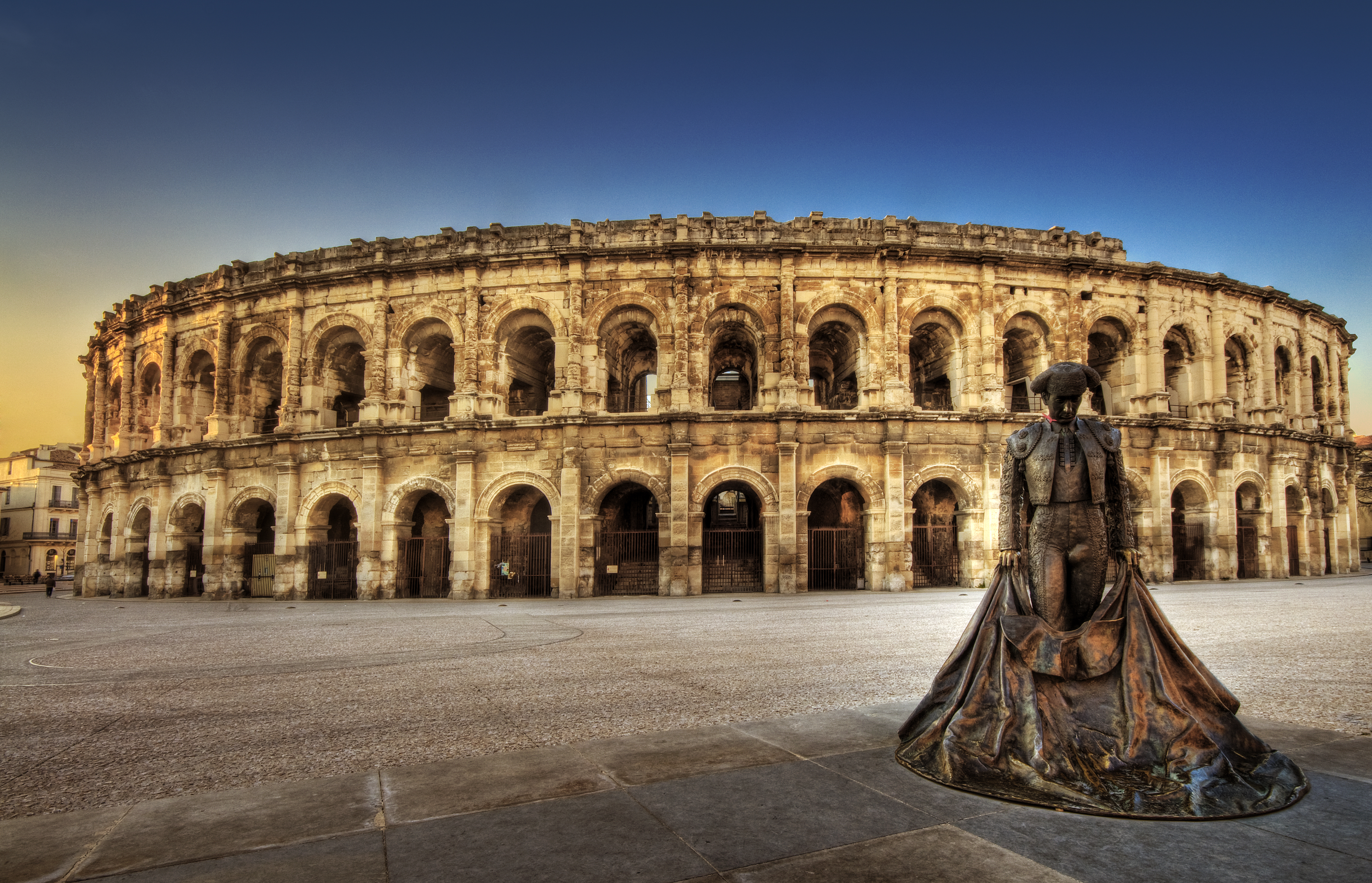
Not a standard entry on a list of France’s top tourist attractions, we think Nimes Arena deserves to be here every time. What is probably the best preserved Roman amphitheatre in the world – better even than Rome’s Colosseum – Nimes Arena really gives you an idea of what it would have been like for Roman spectators. It includes an interactive audio guide and some detailed exhibits to really bring the experience to life.

11. Palace of Versailles

Built in 1624 by Louis XIII, the Palace of Versailles remained the official residence of the Kings of France until October 1789 when the royal family was forced to return to Paris during the French Revolution. One of the best known tourist attractions in France, few places better showcase the opulence and grandeur of the French monarchy better than the Palace of Versailles. There’s a huge amount to see here, from stunning architecture to fabulous furniture, art and antiques and of course the magnificent gardens. Versailles is equally renowned for its formal French gardens featuring decorative pools, perfectly trimmed shrubbery, and charming fountains.
12. Carcassonne

Cite de Carcassonne is an historic fortified city in the Languedoc-Roussillon region. The city dates back about 2,500 years and became part of France in the mid-13th century. At one time it was the center of the French woolen textile industry. A 19th-century restoration project of the Cité turned Carcassonne into the popular tourist destination it is today. There’s a heap of great attractions to explore in Carcassonne, not least of which are the incredible double fortified 3km walls which boasts 52 separate towers.
13. Chateau de Chenonceau
The Chenonceau Chateau is perhaps the most well-known chateau in the Loire Valley. The chateau, built in the 16th century, spans the River Cher, with passageways for boats at the bottom. After Versailles, it is the most visited chateau in France, and is noted for lovely gardens. It was restored after being bombed in World War II.
14. Le Puy-en-Velay

Le Puy-en-Velay, in southern, is famous for three things: its cathedral, lentils and making lace. A shrine to the Virgin Mary atop Mons Anicius has attracted pilgrims from before the Middle Ages. Notre Dame Cathedral is the most popular tourist attraction. Visitors also might want to try Verveine, green liquor flavored with verbena.
15. Bonifacio
.jpg)
Bonifacio is a city in the southwest region of the island of Corsica. The nearby coast features chalk white limestone cliffs the ocean has carved into unusual shapes. Erosion has whittled away at the cliffs so that buildings appear to be almost hanging over the edge. A former fortress once housed the French Foreign Legion but is now a museum.
16. Reims Cathedral
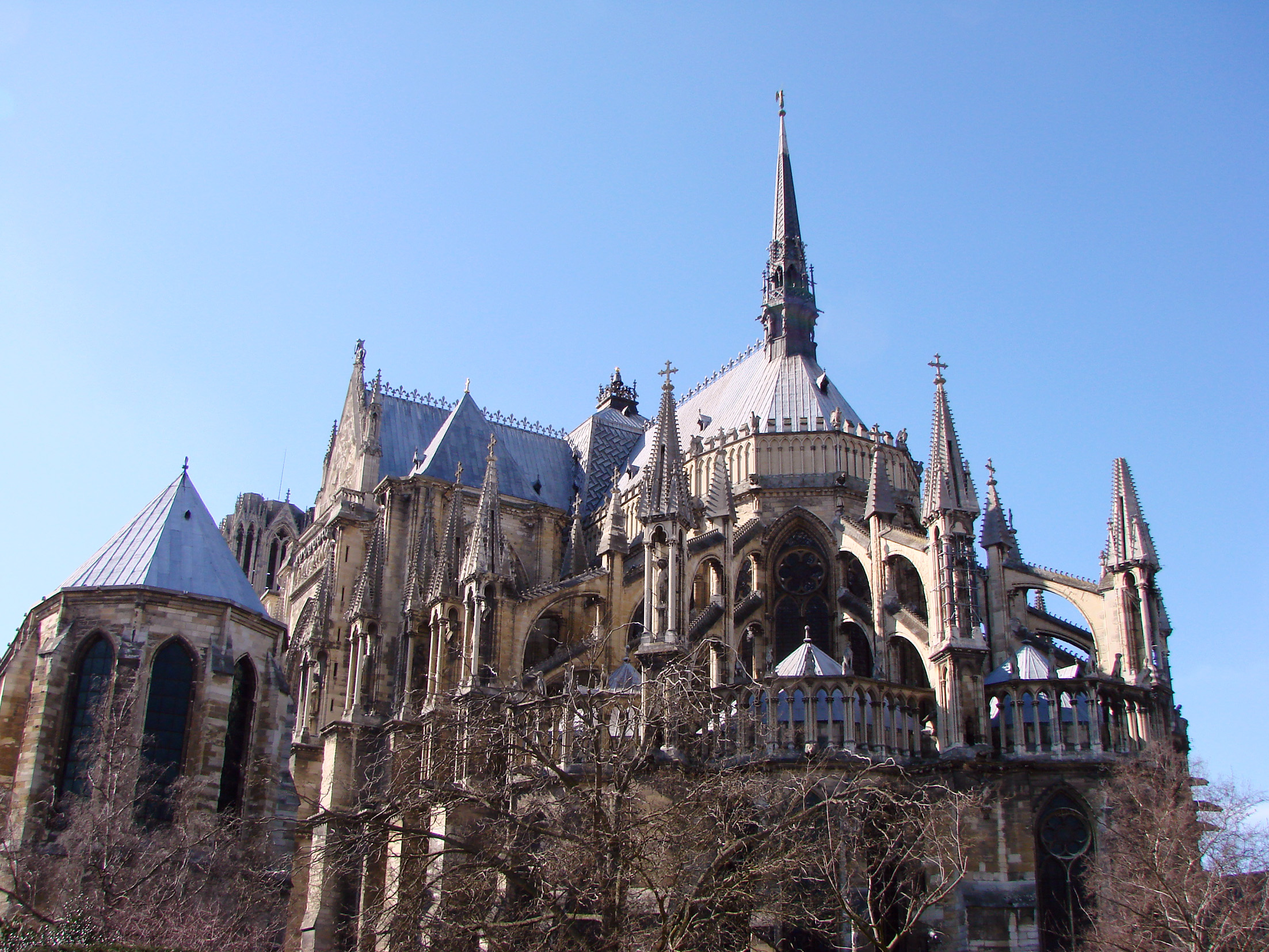
The Reims Cathedral is important to the French monarchy since that is where the country’s kings were crowned. The imposing structure was built in the French Gothic style from 1211 to 1275. It replaced a cathedral built around 400. The cathedral draws about 1 million visitors annually.
17. Palace of Fontainebleau
Located less than 40 miles (65 km) from central Paris, the Palace of Fontainebleau is one of the largest French royal chateaux. The former hunting lodge, in use since the 12th century, is the place where Napoleon abdicated his emperorship before being exiled to Elba. The complex is filled with ornate buildings that have even more ornate interiors.
18. Cathédrale Notre
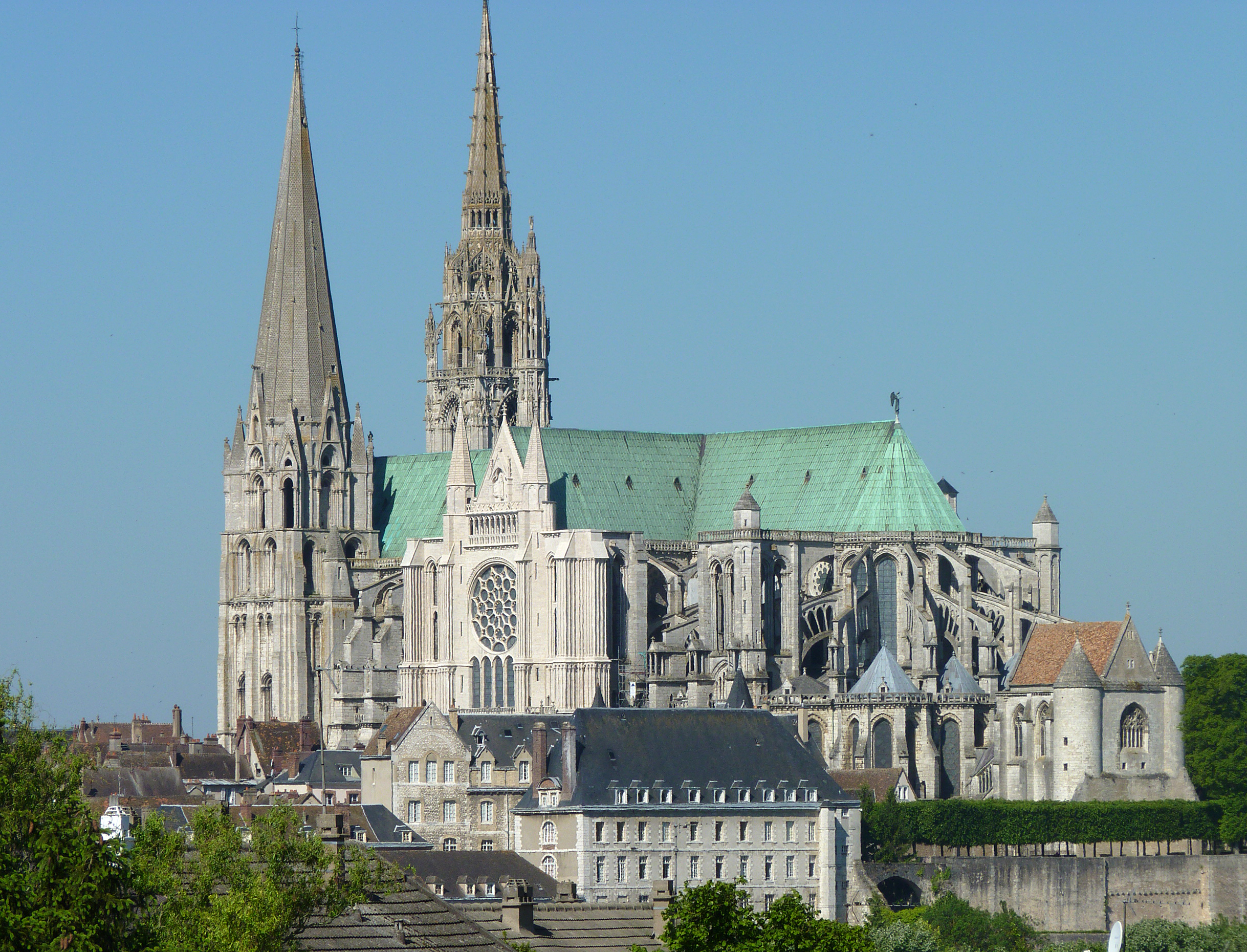
For more than eight centuries, the magnificence of Chartres Cathedral has inspired the faithful. Some say this breathtaking beauty of Chartres has restored belief in the doubtful. The UNESCO-listed cathedral exemplifies the glory of medieval Gothic architecture. Covering 2,500 square meters, the brilliant stained-glass windows allow colorful light to filter into the vast nave, creating an ethereal effect. Many windows date from the 13th century; all reveal the incredible craftsmanship in depicting biblical stories. The rose windows are especially noteworthy for their incredible size and details. Other highlights are the Passion window, one of the most original in its style and expression, and the Blue Virgin window that dates from the 12th century. From April through October, Chartres puts on a spectacular light show illuminating the cathedral at night.
19. Palais des Papes
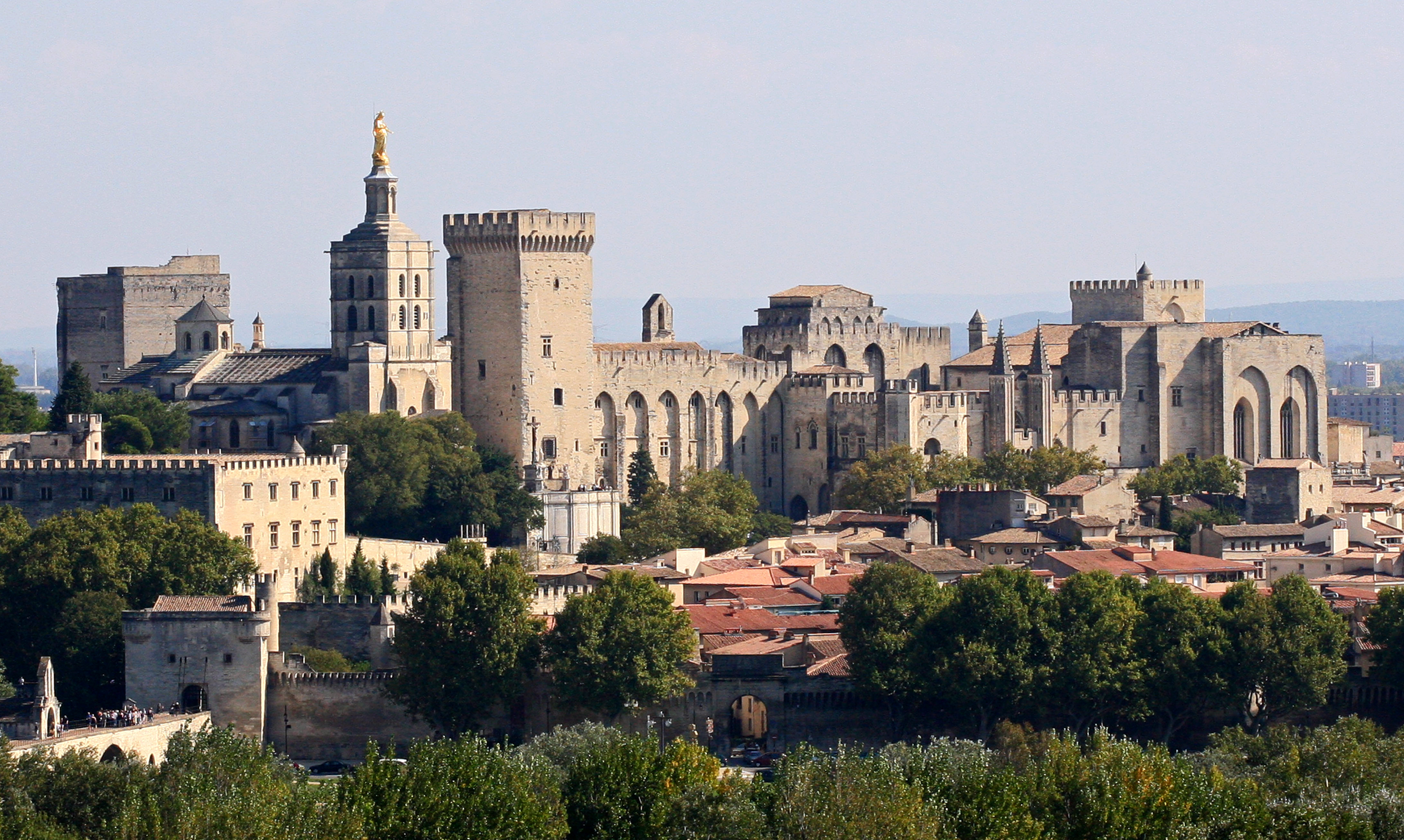
The star attraction of Avignon, the Palais des Papes is one of the largest and most important medieval Gothic buildings in Europe. This is the palace where the Popes of Avignon ruled, during a period when the Papacy was divided, with a Pope in Rome and another in Avignon. The 3 meter (10 feet) thick walls, portcullises and watchtowers emphasize the castle-like look of the palace.
20. Chateau de Chambord
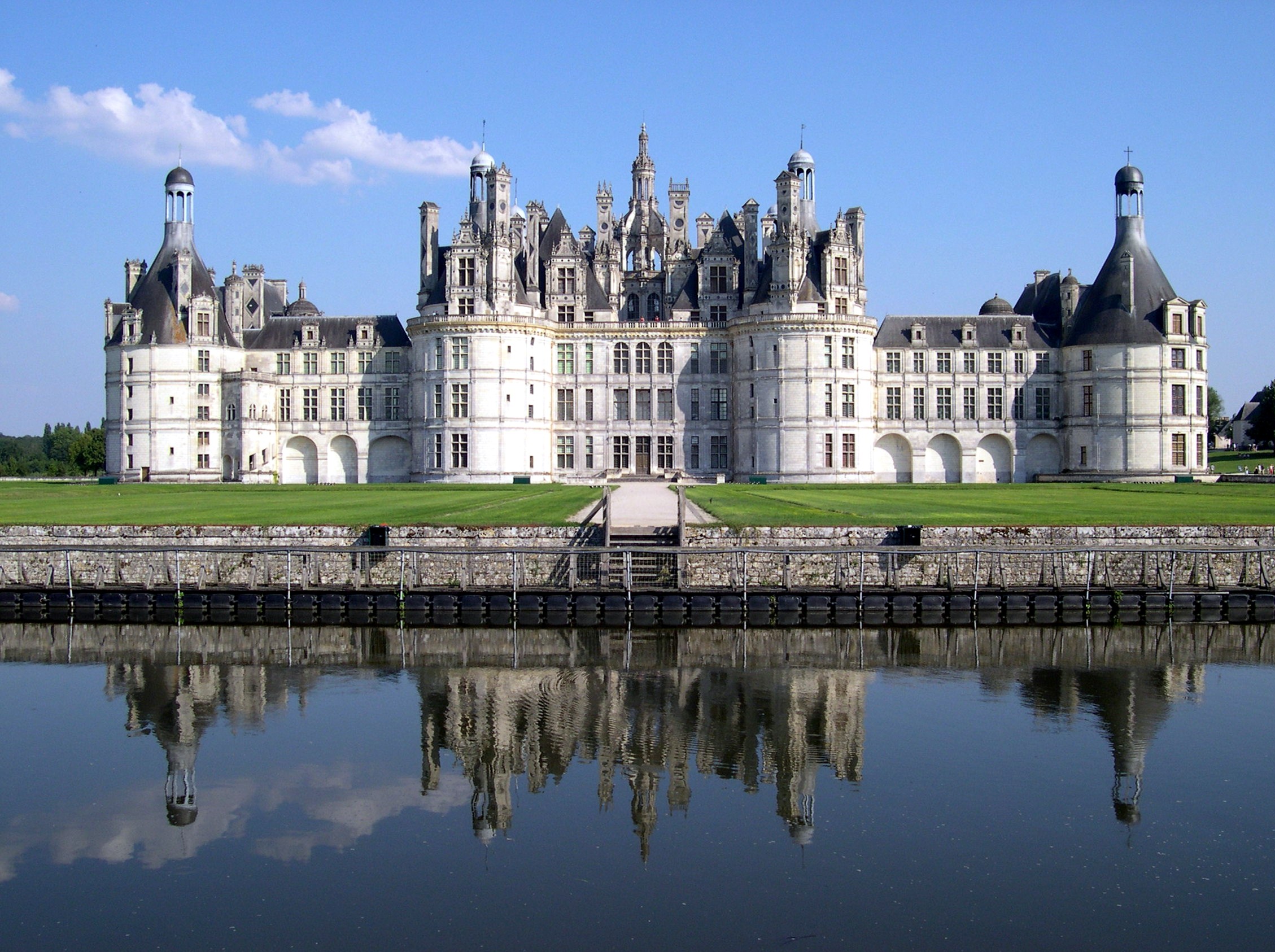
The château to end all châteaux, the Chateau de Chambord is a masterpiece of the French Renaissance. Construction of the Chateau de Chambord started in 1519 by King François I so he could hunt in the nearby forests. The cold and massive 440 rooms of the Château made it unpopular as an actual residence and François I himself stayed here for less than 40 days in total.
21. Loire Valley Châteaux

Traveling through the Loire Valley feels like turning the pages of a children's storybook. Throughout the enchanting countryside of woodlands and river valleys are fairy-tale castles complete with moats and turreted towers. The entire area of the Loire Valley, a lush area known as the "Garden of France," is listed as a UNESCO World Heritage Site. Some of the Loire castles are medieval fortresses built on hilltops and surrounded by ramparts. However the most famous Loire châteaux are sumptuous Renaissance castles that were designed purely for enjoyment and entertaining, as an extension of court life outside of Paris. The Château de Chambord, built for King Francis I, is the most magnificent château; Château de Chenonceau has a distinctive feminine style; and Cheverny is a charming manor house in idyllic surroundings.
22. Rocamadour


Rocamadour is an unforgettable sacred site. In the 11th century, this pilgrimage destination was the third most important in Christendom after Jerusalem and Rome. Rocamadour was also a stop on the medieval pilgrimage trail to Santiago de la Compostela in Spain. The village has seven ancient sanctuaries, but pilgrims flock to the Chapelle Notre-Dame (Chapelle Miraculeuse) that possesses the venerated Black Virgin (Notre-Dame de Rocamadour). This precious Virgin Mary figure was carved from walnut wood that naturally darkened over the centuries and is associated with miracles. Another must-see sight is the UNESCO-listed Basilique Saint-Sauveur, the largest church of Rocamadour built in Romanesque and Gothic style between the 11th and 13th centuries. For a challenging spiritual experience, pilgrims can ascend the steep flight of steps, with 12 Stations of the Cross, leading up to the château at the highest point in the village. Rocamadour is in a natural park of the Dordogne region about 145 kilometers from Limoges.
23. Pèlerinage de Lourdes
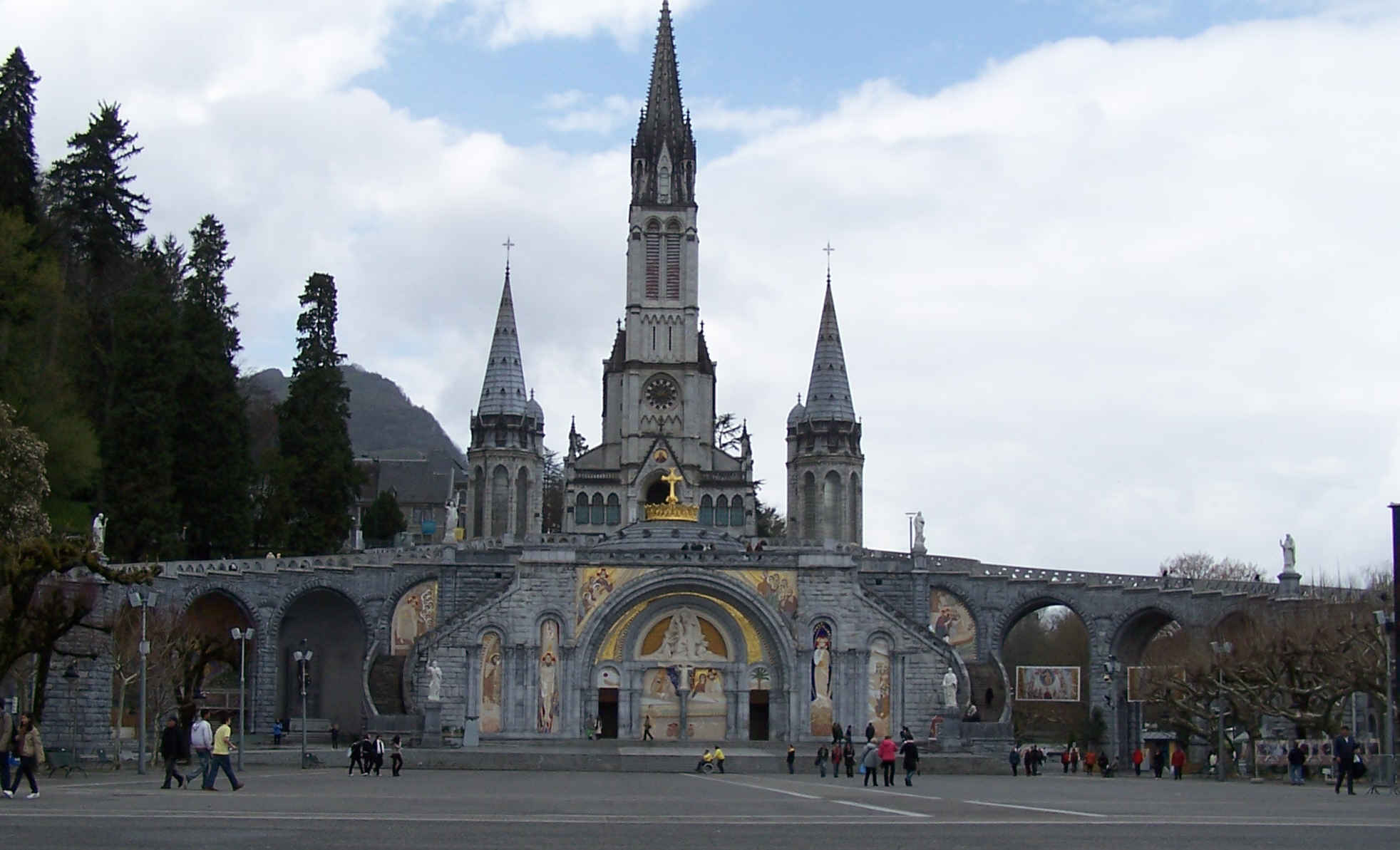
The news spread fast that Our Lady of Lourdes had appeared to Bernadette Soubirous several times, and a tranquil market town nested in the foothills of the Pyrenees turned into a major pilgrimage destination, which today is believed to have the second greatest number of hotels in France after Paris. Every year millions of Christians flock to the Sanctuary, whose most sacred site is the Cave of Apparitions. Devout or not, you will be moved on seeing people engrossed in reverence, immersing themselves in the allegedly healing waters of the grotto's 17 pools, and leaving petitions in a handicraft box. A touching experience.
24. Theatre Antique d'Orange
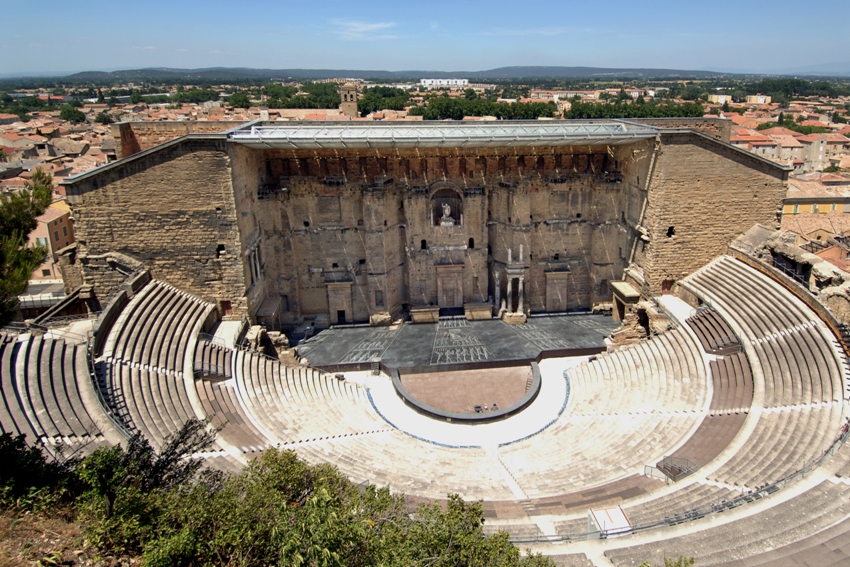

Orange is an ordinary town devoid of that touristy luster you expect to find in a place of this significance. Agricultural in its heart, the modest setting doubles the aesthetic impact of the ancient heritage it unveils to visitors. Orange is home to one of the most complete and best preserved Roman theaters in the world, if not the superior one. Built early in the first century AD, it displays such distinct features that one almost feels it's part of extremely well-staged contemporary mystification. Not to be missed, especially in summer when it becomes a venue for the annual opera festival, the Chorégies d'Orange.
25. Centre Pompidou
.jpg)
.jpg)
Bright white by day, all aglow after dark, this new star of the northern France art scene is on the tip of everyone’s tongue. A provincial cousin to the well-known Centre Pompidou in Paris, this modern art museum was designed by a world-class, Japanese–French duo of architects and is as much architectural gem as exhibition powerhouse, easily on a par with Bilbao’s Guggenheim and London’s Tate. Part of the experience is a designer lunch, aka edible art on a plate, at the museum’s La Voile Blanche.
26. Musee d'Orsay


If the Louvre is the most splendid museum in France, then the Musee d'Orsay is right behind. Housed in the former railway station on the left bank of the Seine, it holds mainly paintings and sculptures by French artists, all of great merit and stunning sensitivity to detail. And much as the entire space is definitely worth perusing, the museum is perhaps best known for its extensive assortment of impressionist and post-impressionist masterpieces. Nowhere else in the world can you take in the genius of Degas, Renoir, Cezanne, and Monet displayed under one roof. It doesn't take expertise in the fine arts to fall in love with this place.
27. Arc de Triomphe
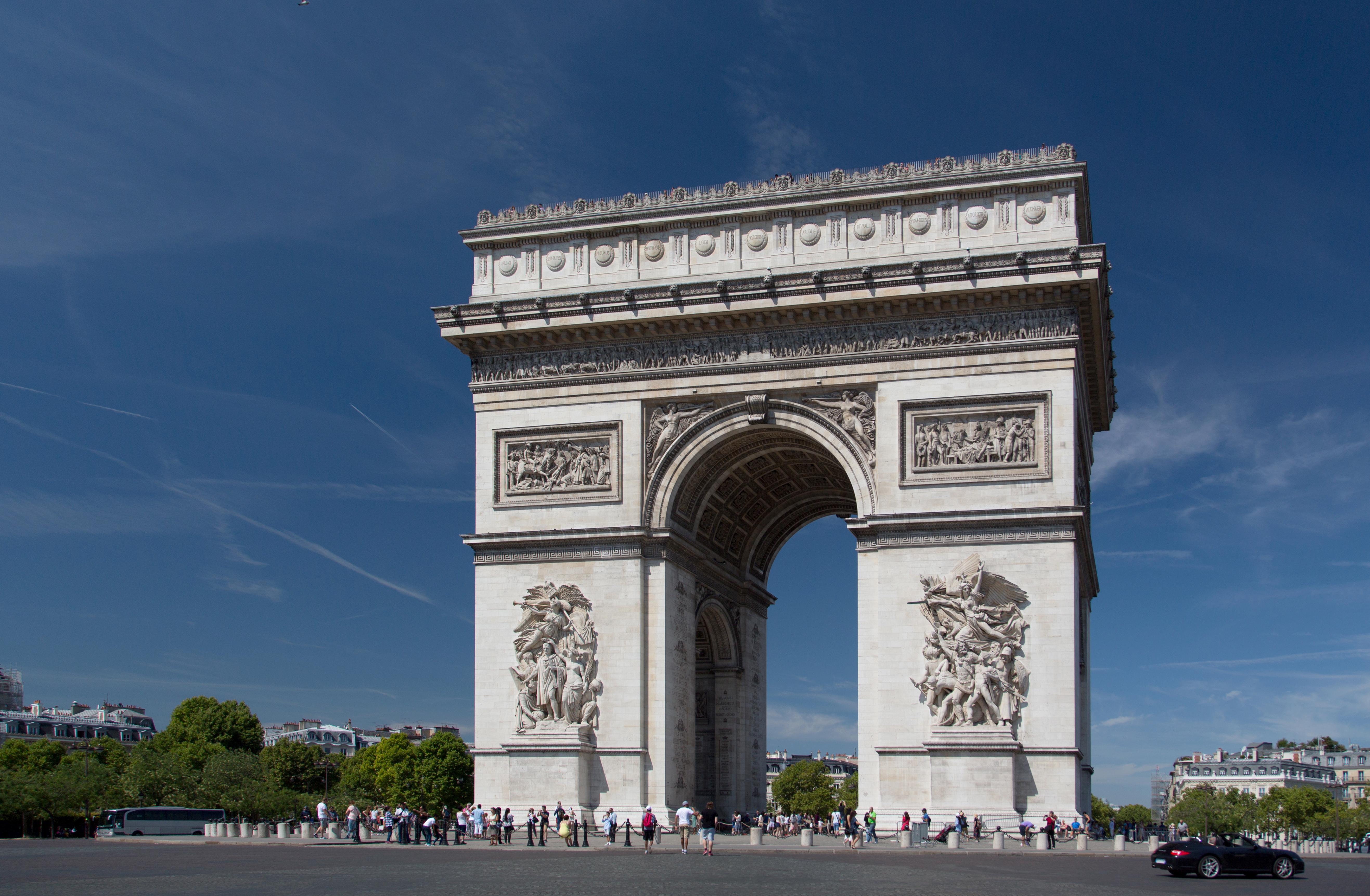

Evidently under the spell of the ancient Roman architecture, Napoleon I commissioned Jean Chalgrin to design a triumphal arch dedicated to the glory of the imperial armies. The world's largest monument of this kind, today it links old and new Paris, forming a backdrop for the precious urban ensemble. The impressive sculptural reliefs adorning the pillars epitomize French artistic sensitivity, and the names of 558 generals as well as major victories engraved all over the arch symbolize the pride all Frenchmen take in their military history. Underneath, the arch shelters the tomb of France's Unknown Soldier, and the panoramic terrace that it carries on top offers a fine panorama of Paris. Some bash it for being nested in the middle of traffic hustle and bustle, but the fact remains that the Arc de Triomphe is one of the most eagerly visited sites in France.
28. Aquarium La Rochelle
La Rochelle is an ocean packed into just two floors. From the dancing jellyfish and dazzling Mediterranean coral to zooming shoals of piranhas and the king of the depths - the shark, the riches contained in all those tanks are so well displayed that visitors gaze at the species as if hypnotized and move on reluctantly as if their noses were glued to the glass. Millions of cubic liters of water, a comprehensive collection of all oceanic biosphere representatives, and an interactive display informing about potential perils to the underwater realm make for a day of awe, discovery and aesthetic impressions.

29. Disneyland Park Paris

A paradise for kids and an opportunity for adults to be kids again, Disneyland Resort Paris is the second one to open outside the United States. As you enter the "Happiest Place on Earth, you are immediately possessed with the magic you so happily yielded to years ago. Scream, chant your favorite Disney songs, and shuttle between Captain Hook's Pirate Ship and Sleeping Beauty's Castle. Two theme parks, a retail, dining and entertainment district, and seven Disney-owned hotels provide for so much fun that even the most die-hard grouches can laugh their head off and have their hearts melted.
30. Eiffel Tower

The Eiffel Tower is the symbol of Paris and one of the top tourist attractions in France. The tower was built by Gustave Eiffel as the entrance arch for the International Exhibition of Paris of 1889. At 324 meters (1,063 feet) tall, it is still the highest building in Paris, offering stunning vistas of the city below. Since its construction more than 200,000,000 people have visited the Eiffel Tower making it the most visited paid tourist attraction in the world. Visitors are impressed by the tower's monumental size and the breathtaking panoramas at each of the three levels. Tourists can dine with a view at the first level or indulge at the Michelin-starred Jules Vernes restaurant on the second level. At the exhilarating height of 276 meters, the top level offers a sweeping outlook over the city of Paris and beyond-extending as far as 70 kilometers on a clear day.












No comments:
Post a Comment